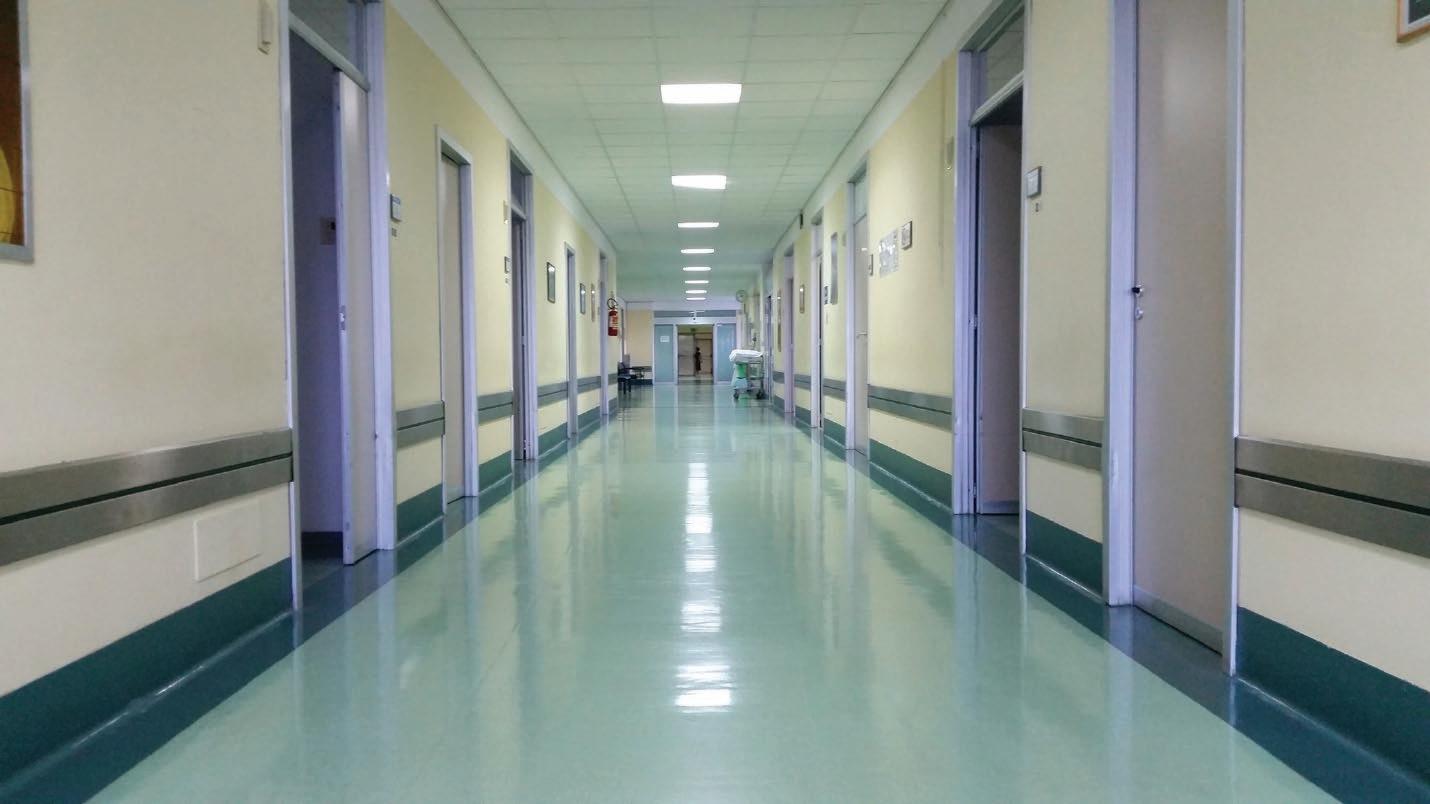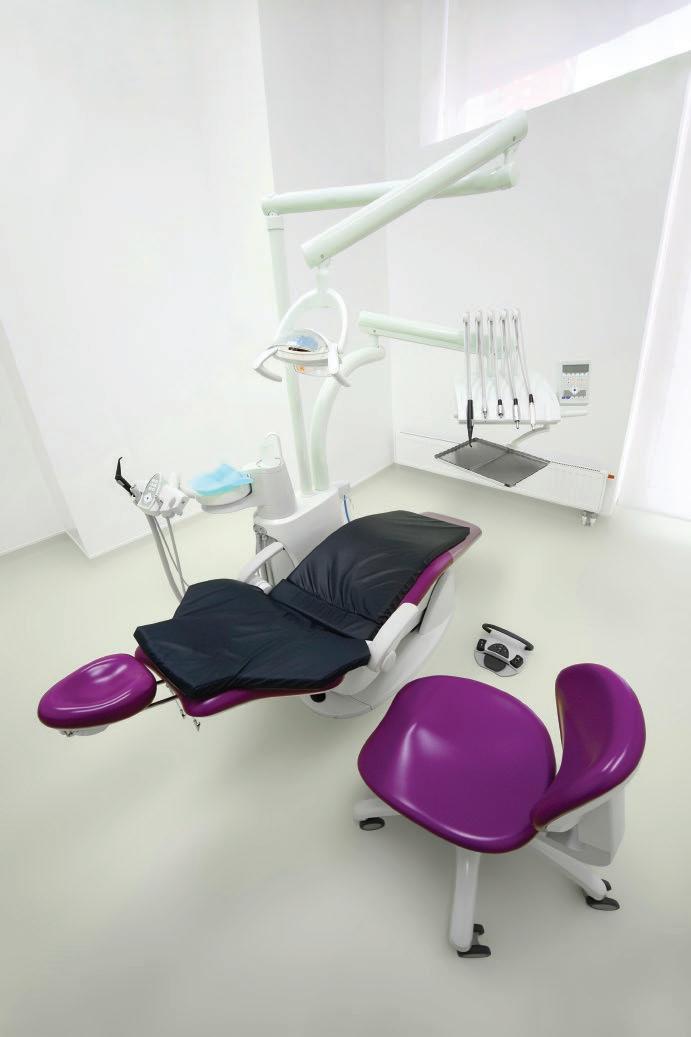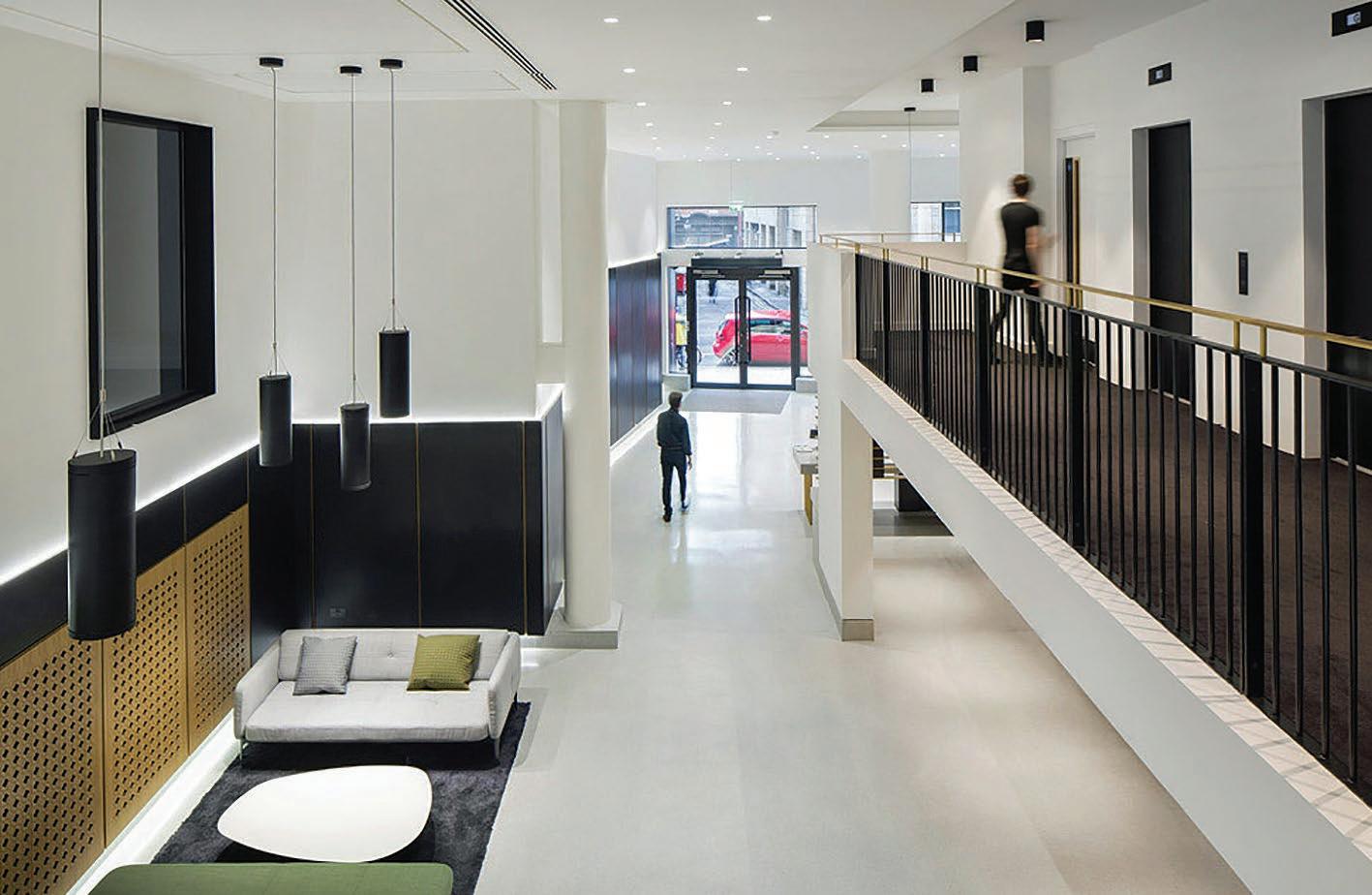5 minute read
Getting the Flooring Right for the Long Term
Camilla Slade, Staff Writer
The hospital floor has to perform well but what should it be able to do and what does it need to meet expectations?
Different parts of a hospital require different flooring solutions although they all share some needs, especially, the need to be able to be cleaned easily which, in turn, will promote regular cleaning
AS WE’VE seen in John’s previous article, the hospital floor is as important and as complex a part of a healthcare facility as any other component. To give an idea of the scope of requirements, Health Care Research Collaborative, in their paper ‘Sustainable Resilient Flooring Choices for Hospitals’ 7 asked a group of healthcare professionals to create a list of attributes that they considered important in choosing a hospital floor. They came up with… “Acoustics, Aesthetics, Antimicrobial properties, Cleanability, Comfort underfoot, Durability, Infection control, Initial cost, Installation requirements, Life cycle cost, Odor, Product quality, Repairability, Rolling resistance, Safety, Stain resistance, and Sustainability.” That’s seventeen things to consider when specifying or selecting flooring materials for a healthcare facility.
Important Flooring Issues
Let’s take a closer look at some of those attributes or what they represent. Healthcare Facilities Today in Larry Bernstein’s article ‘The right flooring choices can impact staff efficiency and patient outcomes’ 8 suggests, “… the time spent in the hospital – whether it be as a patient or visitor – can be made more agreeable with the right flooring. For medical staff, the maintenance crew and every other employee in the facility, the right flooring can make a difference.” adding… “With growing expectations and shrinking budgets in healthcare facilities, the right flooring can help meet challenges… for every space and budget.”
Also, different parts of a hospital require different flooring solutions although they all share some needs, especially, the need to be able to be cleaned easily which, in turn, will promote regular cleaning. The main identifiable areas seem to be (judging from a number of sources) the entrance where durability, including for rolling loads, and colours that are both welcoming and relaxing are important; corridors and clinical areas where, again, durability with foot traffic as well as heavy rolling loads matters and the colours need to support traffic flow; Accident and Emergency as well as operating theatres are where the highest standards of infection control will be practiced and the floor needs to contribute to that; wards and treatment rooms or clinics also need to be clean and to use colours that will help calm patients; finally cafeterias, retail outlets and general areas need to be resilient against staining and easily cleaned. All areas need to have slipproof floor surfaces. There is a lot more guidance on floors for hospitals in UK Department of Health, ‘Health Building Note 00-01 General design guidance for healthcare buildings’ 9 including design issues such as, “Floor colours should contrast visually with wall colours… [and] Fittings should contrast visually with the surface to which they are fixed and the surface against which they may be viewed.”
Performing Whatever the Conditions
In hospitals, people might often be distracted and/or preoccupied and so visual differentiation, including for floor surfaces, makes sense. There’s more information on the installation and management of floors at UK Department of Health, ‘Building Note 00-10 Part A: Flooring’ 10 , including, “Before a new or replacement floor covering is specified, the specifier should conduct a risk assessment and the following performance requirements should be considered: environment; contamination; appearance; acoustics; use; footwear; slip and trip potential of foot traffic etc. under different conditions.” That last point about conditions is important because, in a busy hospital on a bad weather day (rain or snow) it’s important that the flooring retains its properties even when foot traffic might bring water and soiling onto the surface.
To maintain that performance under all conditions, cleaning is a major element in the management regime for hospital flooring. Flowcrete 11 explains, “The key criterion for floors
in such an environment is that they facilitate a fast and effective cleaning regime by being seamless, smooth and impervious. The floor needs to maintain these properties despite challenges such as constant traffic from staff, patients and wheeled equipment, spillages of liquids and potentially corrosive substances, frequent cleaning and physical impacts. If the floor fails then it will become difficult to clean, with the potential for germs to accumulate…”
Specifying and Selecting a Hospital Floor
Hospitals have a long working life and so getting the specification right at the outset will help to ensure that materials and fittings are not only fit for purpose but also are able to continue performing to the highest standards for as long as possible. In his Thesis,’ Floor finish selection in hospital design: a survey of facility managers’ 12 Shashank Singh reminds readers that it is at the specification stage that management and maintenance need first to be considered. “However, during decision making in terms of facility design, the topic of facility maintenance of rarely addressed which affects the performance of the organization.”
Healthcare without Harm ‘Healthy & Sustainable Flooring’ 13 , introduces a number of considerations around specifying hospital flooring, including: “While the immediate cost of new flooring is inevitably a prime consideration, in recent
years concepts of sustainability and ‘green’ practices have been developing. These are being incorporated into flooring specifications and have become key decision making factors in determining the type of flooring to be installed in healthcare environments.” This extends not only to the carbon footprint of the materials used in manufacture and installation but also, “… consideration of the environmental impact of disposal at the end of the useful life of the flooring can influence the choice, some materials being inherently more difficult and hazardous to deal with.”
The ‘Healthcare without Harm’ paper did identify cost as a primary consideration which, of course, it is, especially in a healthcare system that is already challenged where costs are concerned. As Steve Urwin writing in Better Building Healthcare 14 explains, “NHS England has identified a £30billion shortfall in the NHS budget come 2020.” Adding, “Long term value, durability and flexibility are, therefore, of utmost importance when specifying flooring for the healthcare environment.”
All in all, it’s easy to take something as basic as flooring for granted but, in practice, the materials used for flooring will have an impact on the good running of a hospital and on its patients’ welfare for many years. It is neither simple not should it be taken for granted when specifying any hospital new build or refurbishment.
Consideration of the environmental impact of disposal at the end of the useful life of the flooring can influence the choice, some materials being inherently more difficult and hazardous to deal with
SO FRESH & SO CLEAN…
ANTIMICROBIAL, EASY-CLEAN FLOORING FOR HEALTHCARE ENVIRONMENTS

I S O 2 2 1 9 6
Book your FREE Flooring Consultation with our network of regional representatives…
+44 (0) 1270 753 000 uk@flowcrete.com @flowcreteuk






